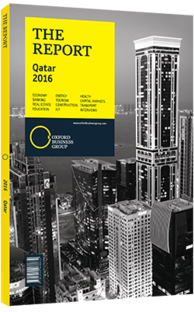New initiatives aim to fill skills gap in medical education in Qatar
Skills shortage is a challenge for the medical profession in Qatar. To meet rising demand for health care services, the country needs 150 doctors a year but graduates only five, according to Abdullatif Al Khal, director of medical education at Hamad Medical Corporation, the main health care provider. Foreign help is used to fill this gap, with 69% of doctors and 91% of nurses recruited abroad, according to management consultancy McKinsey. However, retention is difficult, with many expatriates viewing stints in Qatar as stepping-stones to furthering their careers elsewhere, leaving the workforce in flux. “Recruiting and retaining skilled workers is the top challenge for the health sector,” Roger Phillips, legal director at the Qatar branch of global law firm Pinsent Masons, told OBG.
New College Of Medicine
In autumn 2015 Qatar University opened the country’s first public college of medicine. The six-year MD programme debuted with a class of 59 students, exceeding an initial goal of 50. Another 17 are enrolled in a foundation programme that prepares them in pre-requisites, such as maths and biology. With nationals given preference in admissions, some 55% of the students are Qatari, the rest being mostly from other Arab countries. The hope is to double year-one admissions for the 2016/17 academic year without compromising quality.
The curriculum has been custom-built “to combine international standards with the necessary focus to address the specific needs of Qatar”, Zeina Al Azmeh, the college’s assistant vice-president for strategic communications and outreach, told OBG. There is a special focus, she said, on patient communication and leadership – two areas the feasibility study had identified as particularly exigent in local care centres and hospitals. The new programme joins the country’s other medical school, Weill Cornell Medicine-Qatar, a private institution established jointly with Qatar Foundation in 2001 that also offers a six-year MD programme at its campus in Education City, a 14-sq-km complex on the edge of Doha. In May 2015 the Weill programme graduated a record 42 students and enrolled another 54 for 2015/16 – of which 30% are Qatari – pushing total six-year enrolment up to 283, up from 267 the previous year.
Meanwhile, in the field of research – another area of focus under the National Health Strategy 2011-16 – a new post-graduate programme in biomedical sciences also began in 2015, developed by the Qatar Biomedical Research Institute (QBRI) and located at Hamad Bin Khalifa University. The QBRI has accepted 20 students for its masters and PhD courses.
Nursing
Nationals are also being encouraged to enter the nursing profession. In 2015 sponsorships were announced for the country’s only Master of Nursing programme at the University of Calgary Qatar (UC-Q). In April one of the country’s main health providers, state-run Primary Health Care Corporation, signed an agreement with UC-Q to sponsor nursing students beginning in the 2015/16 academic year, with preference given to Qataris. Since its establishment in 2007, the UC-Q programme has graduated 150 nurses, with enrolment in 2014/15 of 30 students (alongside another 450 in its bachelor of nursing programme). Incentives are likely to continue as the government seeks to draw nationals into a field that is in very high demand. “Interest in nursing as a career choice is on the rise,” Kim Critchley, dean and CEO at UC-Q, told OBG. “The student population has more than doubled in the past three years. Leadership positions in nursing are now seen as viable career paths for locals.” In July 2015 the government also launched a fund to sponsor Qataris to study either at home or abroad in professions of high demand, with the highest amounts allocated to would-be doctors and nurses: qualified Qataris studying medicine receive a monthly allowance of QR10,000 ($2740) for the first year, then increasing each year to reach QR26,000 ($7130) in the fourth and subsequent years.
You have reached the limit of premium articles you can view for free.
Choose from the options below to purchase print or digital editions of our Reports. You can also purchase a website subscription giving you unlimited access to all of our Reports online for 12 months.
If you have already purchased this Report or have a website subscription, please login to continue.

